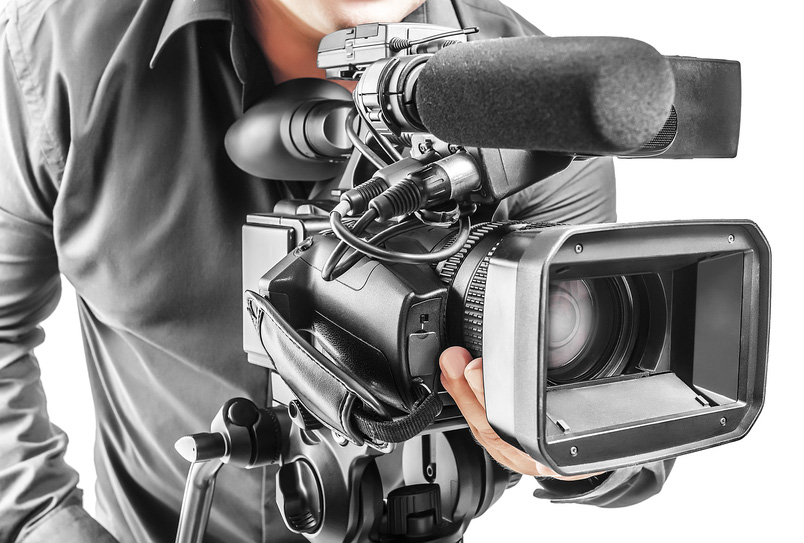How Legal Videography Can Make or Break Your Legal Technique
How Legal Videography Can Make or Break Your Legal Technique
Blog Article
Discovering the Vitality of Lawful Videography: a Comprehensive Insight Into Its Functionality in Maintaining Accurate Visual Records for Legal Cases
Legal videography stands as a crucial element in the realm of lawful proceedings, working as a silent yet effective observer in the search of justice. The utilization of video clip innovation in recording lawful instances exceeds simple record-keeping; it envelops the extremely significance of events, emotions, and statements that unravel within courts. By meticulously recording aesthetic evidence, lawful videography not only protects the precision of these moments however also offers a much deeper understanding of the details entailed. As we dive right into the functionality and relevance of lawful videography in the context of legal situations, a profound awareness dawns upon the important role it plays in forming the program of justice.
Importance of Legal Videography
Highlighting the crucial function of lawful videography in modern-day legal proceedings, its importance hinges on its ability to provide irrefutable visual proof that enhances the presentation of facts and statements. By recording live occasions, depositions, and witness statements in a video layout, lawful videography makes certain that every detail, nuance, and expression is accurately preserved for later evaluation. This aesthetic paperwork serves as an effective tool in court rooms, allowing judges and jurors to much better recognize the context of an instance and make educated choices based upon the here and now proof.
Furthermore, lawful videography adds to increased openness and responsibility in the lawful system. In essence, the significance of lawful videography exists in its capability to support the integrity of the lawful process by capturing and maintaining accurate aesthetic records that sustain the search of justice.
Functionality in Legal Documentation
Lawful videography's role in contemporary lawful process extends beyond giving aesthetic evidence; its capability in lawful documentation is vital for precisely protecting the information of occasions and testimonies. Through the careful recording of depositions, court procedures, witness statements, and crime scene examinations, legal videography makes sure an unfiltered account of events that can be taken another look at and evaluated during the legal process. This accurate documentation serves as an important resource for juries, attorneys, and courts to reference details moments, body movement, faces, and nuances that might not be completely caught in written transcripts alone.
Furthermore, legal videography plays a pivotal duty in keeping the honesty of lawful procedures by decreasing the risk of misconception or adjustment of information. The aesthetic documents caught via legal videography give an objective representation of the facts provided throughout an instance, providing a extensive and dependable source of evidence that can significantly impact the outcome of lawful conflicts (Legal Videography). Basically, the performance of legal videography in legal paperwork serves as a keystone in supporting transparency, precision, and fairness within the lawful system
Value in Visual Evidence Preservation
Maintaining visual proof with thorough recording techniques is an essential aspect recommended you read of legal videography. The significance of aesthetic evidence conservation can not be overstated in lawful procedures. Aesthetic evidence, such as videos of crime statements, crashes, or scenes, can provide very useful understanding into occasions that words alone may not completely capture. By properly documenting these visuals, legal videographers play a critical role in making certain the stability and credibility of evidence offered in court.
Aesthetic evidence preservation also aids in protecting against misconceptions or false impressions that can occur from composed or spoken testimonies. The ability to see and listen to events as they took place can substantially influence the end result of an instance. Visual evidence can serve as a powerful tool for both the prosecution and defense in providing their debates persuasively.
Duty in Ensuring Justice
In the pursuit of just lawful and fair results, the check it out function of lawful videography is crucial. Legal videography plays a vital duty in ensuring justice by supplying impartial and exact aesthetic evidence that can dramatically impact the result of lawful instances. Unlike written records or testaments, video recordings capture the nuances of body language, facial expressions, and tone of voice, supplying a comprehensive representation of events as they unfold. This visual proof is especially important in court rooms, where it can aid challenge or support witness testimonies, reinforce disagreements, and ultimately contribute to the facility of truth and justness.
Additionally, lawful videography acts as a way of preserving turning points and information that may be missed out on or misinterpreted in composed records (Legal Videography). By documenting scenes, actions, and communications in real-time, lawful videography assists protect against misrepresentations and makes sure that all celebrations involved have accessibility to the same information, promoting openness and liability in the lawful process. Eventually, using legal videography not just enhances the efficiency of legal procedures but also upholds the concepts of justice and equity in the lawful system
Important Tool for Legal Situations

Conclusion
Finally, legal videography plays an important function in preserving precise aesthetic documents for lawful situations. Its significance depends on its functionality in lawful documents, importance in visual evidence preservation, and duty in making sure justice. As a vital device for lawful cases, lawful videography works as an important source for offering aesthetic evidence and contributing to the general stability of the lawful process.
Legal videography's role in modern-day legal process prolongs past supplying visual proof; its functionality in lawful documents is essential for accurately preserving the details of events and testaments. In essence, the capability of lawful videography in lawful documents offers as a foundation in supporting transparency, accuracy, and justness within the lawful system.
Ultimately, the usage of lawful videography not only improves the effectiveness of lawful process yet likewise maintains the concepts of justice and equity in the lawful system.

As an important tool for lawful instances, lawful videography serves as a useful resource for presenting aesthetic proof and adding to the overall integrity of the legal procedure.
Report this page